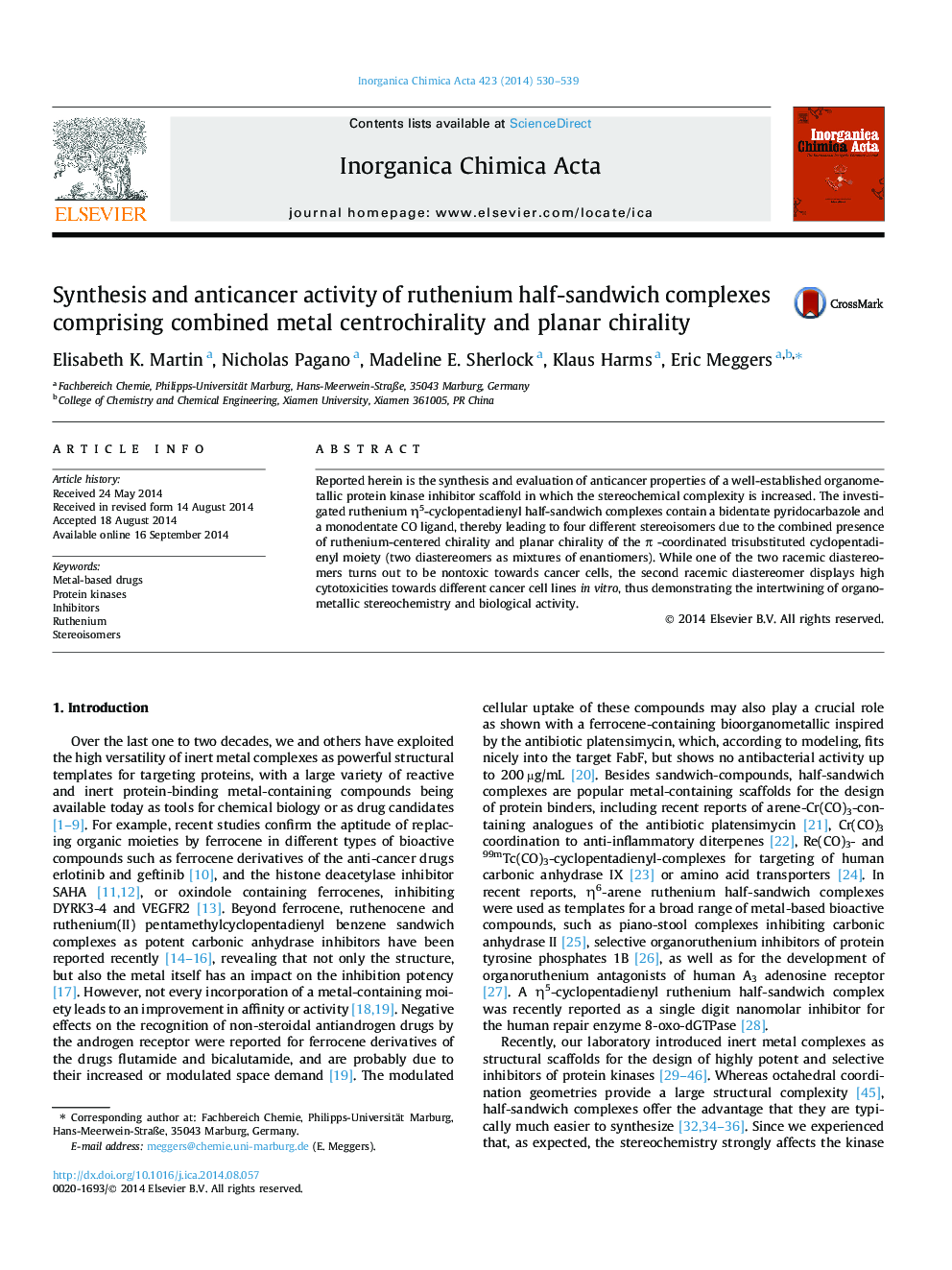| Article ID | Journal | Published Year | Pages | File Type |
|---|---|---|---|---|
| 1309500 | Inorganica Chimica Acta | 2014 | 10 Pages |
•Half-sandwich Ru-complexes with increased stereochemical complexity were developed.•The ligand choice makes them promising scaffolds for protein kinase inhibition.•Different diastereomers show varying anticancer activities in vitro.•Solubility and cell-entering abilities seem to be a major factor of cytotoxicity.
Reported herein is the synthesis and evaluation of anticancer properties of a well-established organometallic protein kinase inhibitor scaffold in which the stereochemical complexity is increased. The investigated ruthenium η5-cyclopentadienyl half-sandwich complexes contain a bidentate pyridocarbazole and a monodentate CO ligand, thereby leading to four different stereoisomers due to the combined presence of ruthenium-centered chirality and planar chirality of the π -coordinated trisubstituted cyclopentadienyl moiety (two diastereomers as mixtures of enantiomers). While one of the two racemic diastereomers turns out to be nontoxic towards cancer cells, the second racemic diastereomer displays high cytotoxicities towards different cancer cell lines in vitro, thus demonstrating the intertwining of organometallic stereochemistry and biological activity.
Graphical abstractThe stereochemical complexity of a well-established organometallic protein kinase inhibitor scaffold was expanded by combining the presence of metal-centered chirality with planar chirality of a π-coordinated cyclopentadienyl moiety. While one of the two racemic diastereomers is nontoxic towards cancer cells, the second racemic diastereomer displays high cytotoxicities towards different cancer cell lines in vitro, thus demonstrating the intertwining of organometallic stereochemistry and biological activity.Figure optionsDownload full-size imageDownload as PowerPoint slide
